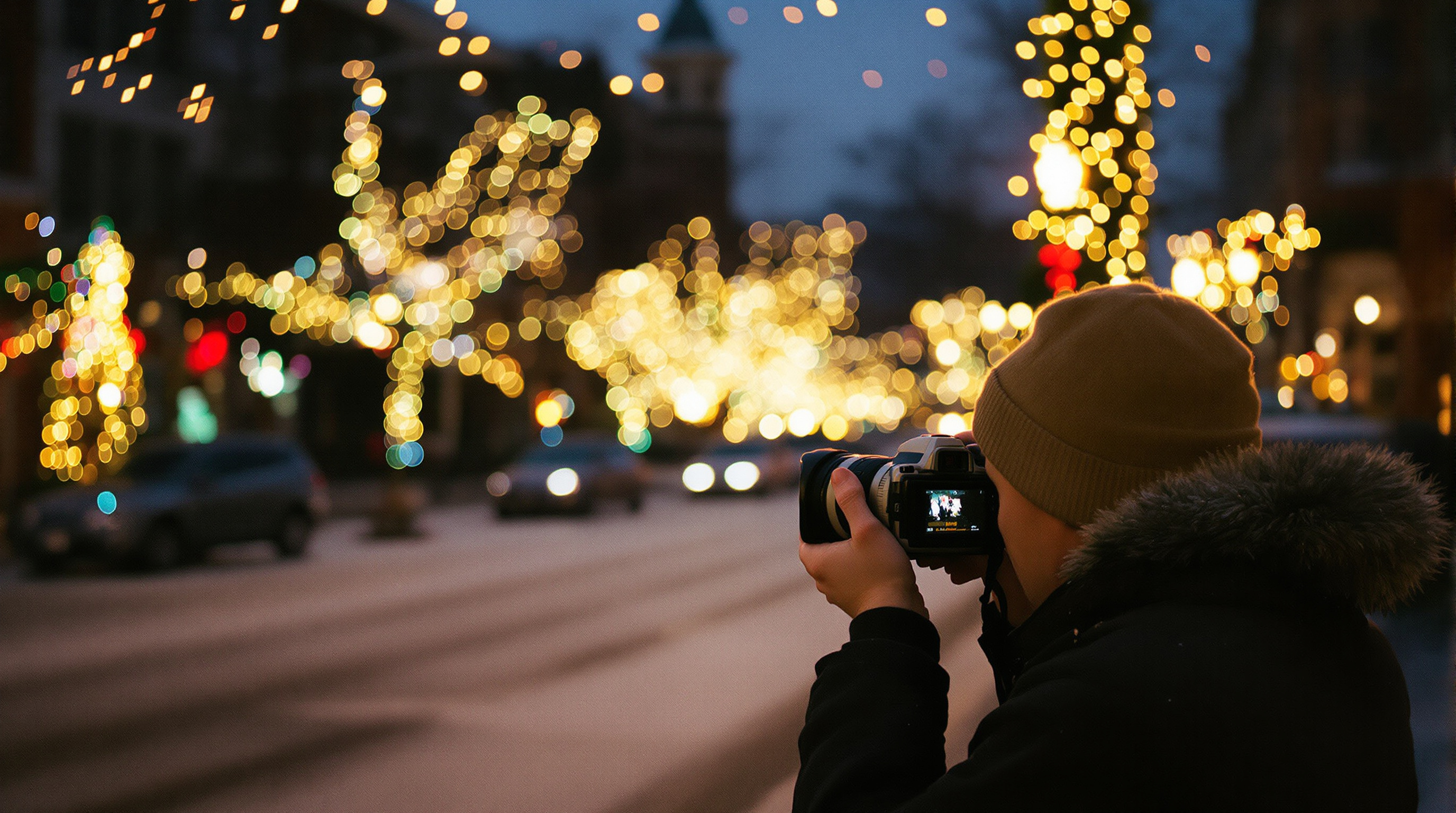Mastering Winter Film Photography with High ISO Films and Low Light Techniques
T.K. Broecker / 9 November 2025

Winter Film Photography in Louisville – Simple Tips for Great Night Shots
Winter brings short days, bright lights, and cozy nights—perfect for film. From holiday streets in NuLu to the glow at Fourth Street Live, Louisville gives you lots of low-light scenes to try. With the right film and a few easy tricks, you can turn cold nights into warm, timeless photos.
Shooting Film in Cold Weather
Cold can change how film and cameras act. A little planning keeps your gear happy and your photos sharp.
- Keep film warm: Cold can lower film speed. Carry extra rolls in your coat pocket until loading.
- Choose simple cameras: Batteries drain fast in winter. Manual cameras like a Pentax K1000 or Nikon FM2 keep working.
- Watch condensation: Going indoors? Seal your camera in a zip bag and let it warm up before opening.
- Handle with gloves: Thin liner gloves make changing rolls easier in the cold.
Want more cold-weather film tips from the pros? See Ilford Photo’s winter film guide.
Great High-ISO Films for Winter Nights
Low light needs faster film. These stocks work well around Louisville’s holiday lights, ice rinks, and night streets:
Kodak Portra 800
Warm color with fine grain. Great for indoor family time and cozy café scenes.
Cinestill 800T
Tungsten-balanced for street lights and shop windows. Christmas lights glow with soft halos.
Ilford Delta 3200
Moody black-and-white. Can be shot from ISO 1000 up to 6400 with push processing.
Kodak T-Max P3200
Modern B&W with strong shadow detail. Try ISO 800–1600 for clean results; push for drama.
Easy Low-Light Techniques
A few simple steps make winter film photos shine—even at night.
Metering
- Incident meter: A handheld meter gives steady readings in mixed light.
- Spot meter mid-tones: Meter faces or mid-gray areas to balance bright lights and deep shadows.
- “Snowy 16” boost: Bright snow needs +1 to +2 stops so it stays white, not gray.
Pushing Film
Need more speed? Rate Portra 800 at 1600 (push +1) or try Delta 3200 at 3200–6400. Tell your lab how many stops you pushed.
Keep It Steady
- Tripod for anything slower than 1/60s.
- Use a cable release or the 2-sec timer.
- No tripod? Brace on a wall or use a simple string stabilizer.
Have Fun with Motion
Try 1/15s to 2s and let car lights paint lines across the Big Four Bridge or downtown streets.
Processing & Scanning with a Local Lab
Talk to your Louisville lab before you shoot in the cold. Good notes help them match your look.
- • Push/pull processing to match your ISO rating
- • Cross-processing for creative color shifts
- • Custom scans that keep film grain and texture
- • Notes on lighting (tungsten, LED, neon) for better color
- • Test a few frames before big events
Need a simple walkthrough on film processing and scanning options? Read our local post: Beginner’s guide to film processing & scans.
Why Winter Grain Looks So Good
Grain isn’t a mistake—it adds mood. High-ISO stocks and push processing bring out a cozy, cinematic feel that fits winter nights.
- Portra 800 keeps tight grain even when pushed
- Cinestill 800T’s grain plays nicely with point lights
- Delta 3200’s bold grain makes snow scenes feel classic
Wrap-Up
Winter film work is about glow, grain, and good notes. Pick a fast stock, meter simply, steady your camera, and partner with a local lab. You’ll turn dark evenings around Louisville into warm, timeless frames you’ll love to print.
Ready to capture winter on film? Develop and scan locally with our film processing team.
Explore Film Services